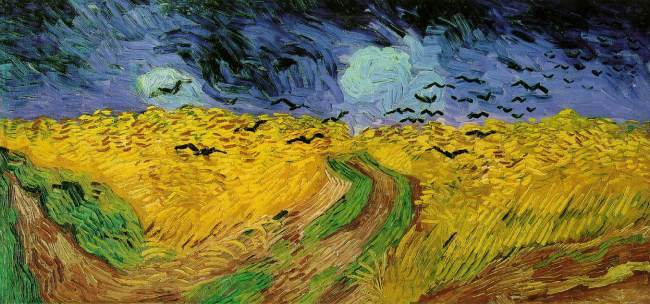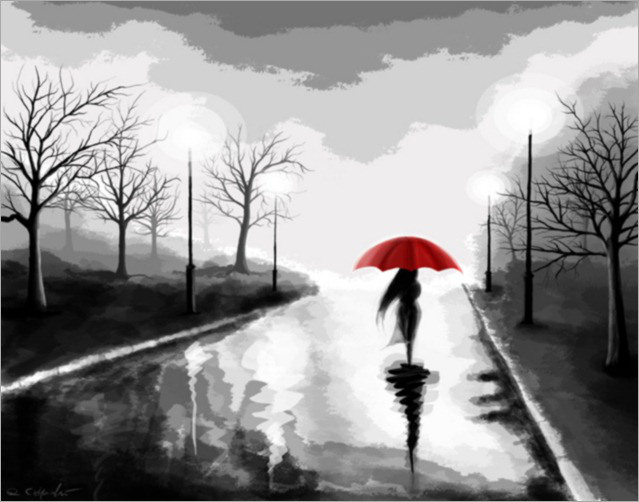Is there a proper focus for understanding, and evaluating, the arts? Which is more important, the characteristics of the artist, as Tolstoy would have us believe, the actual work of art itself, or is it how the audience appreciates the art work? We might argue that art is about all three of these potential interpretations and that each plays a fundamental role in what makes art, art.
If we were just to look at the artist and his, or her, perceptions we would have to consider that there were different elements up for debate; the first one being the intention of the artist, and what they were trying to convey through their art. Our concerns arise here when the audience interpretation of the artist’s work is different from what the artist was actually trying to say. Does this invalidate the work? We could argue that it does not, and that most critics would say that as long as the audience gets something out of art, then it has not been created in vain. However, this begs the question of should we even consider the artist’s intentions? Further, if we then discover new facts about the artist, should they alter our perception of the artist’s work? For instance, the author of Harry Potter, J. K. Rowling, has said that in her mind one of her characters if gay. If one now goes back to re-read Harry Potter but still does not identify the gayness of the character, should we then just accept the artist’s views? Or, is it reasonable for us to assert that we do not perceive the character as gay? We would contend that is reasonable to assert that we do not perceive it. Art is subjective, and we believe that it is within the subjectivity of such aesthetic works, and the illusions that are conjured up in art’s mysteries, that hold the enchanting beauty of its magic. The fact that two people can perceive something entirely different from the same piece of work is, arguably, a dimension that demonstrates a free will that encourages us to, somewhat obliquely, consider the Robert Frost poem The Road Less Traveled: and how taking the road less traveled makes ‘all the difference’ to our journey.
Another dimension of art that is up for debate is the social content, and what role it should play in art. Some would argue that knowing the meaning, and the message, that the artist is trying to convey with their work is the crucial element of understanding the work. Some would contend that it is this dimension of art that gives the work its vitality and soul. Others would assert that the social content should not be the focus, but the art work itself.
Some would offer that it should not be about the artist but the art work and that, social content, and therefore, arguably, cultural values, are not an important factor. However, the acknowledgment, appreciation, and awareness of social content in art, we would argue, can enhance an aesthetic work and, possibly, take us to a deeper level of understanding: recognizing the humanity in art is vital to understanding the humanity in ourselves.
Margaret MacDonald, an artist herself, had a lot to say about art. She felt that to fully appreciate art one had to become an active participant in the art itself. She felt that to just merely look at a piece of art and pick out a good, or bad, feature was to miss the bigger picture. She argued that it is not, simply, enough to just pick out what we like, and do not like, about a piece of art, and that to do this limits us: the limit is manifested in that we will, eventually, in probability, run out of things to say about the particular piece of art work.
MacDonald writes that there is always more to say about art, because art is always evolving and changing. The meaning of art shifts through time because the interpreter changes. A piece of art can mean different things to different people at different times in history because the appreciator also experiences change and evolves. That is to say that someone who is reading Hamlet today, perchance, may not interpret it the same way as someone reading Hamlet during Shakespearean times. Or that the Mona Lisa smile does not change, but over time our interpretation of her smile can change: the De Vinci code drifts J–L. According to MacDonald, the best way to enjoy art, and feel art, is for the interpreter to put a part of himself, or herself, in the art.
Critics of MacDonald would be quick to point out that she puts too much emphasis on the interpreter and not enough on the art itself and that it, arguably, cannot be the case that whatever one believes about a work of art makes it a truth. Which is more important then, the tension between the interpreter and the art or the artist intention? Why does either one have to be prioritized as more significant than the other, or more important? Why can art not be a collaboration of both the artist and the appreciator? After all is it not an aesthetic impulse to interpret art after we perceive it? All dimensions of interpretation, we would offer, seem equally important. Art for art’s sake is a nice concept, but art should be shared and appreciated by all of humanity.
Tolstoy wrote that ‘Art is a human activity which has as its purpose the transmission to others of the highest and best feelings to which men have risen. Nietzsche argued, in The Birth of Tragedy, that art was the only justification for life. Perhaps if we, subtlety, bring the perceptions of these great writers together, for a moment, we can see that art is a shadow dancing within in a silhouette in search of the possibility of a harmony for humankind.







